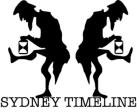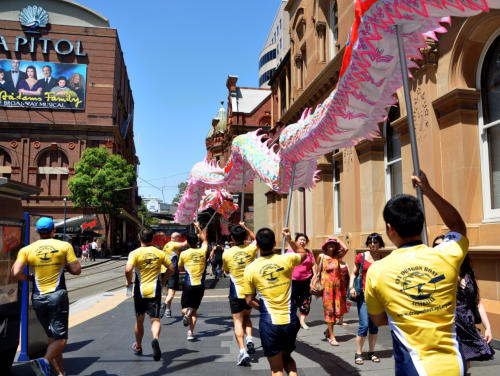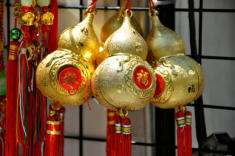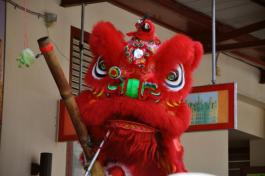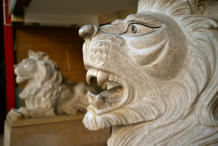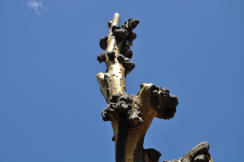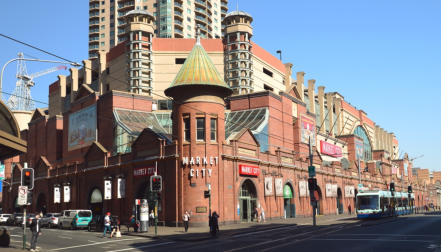

Chinatown
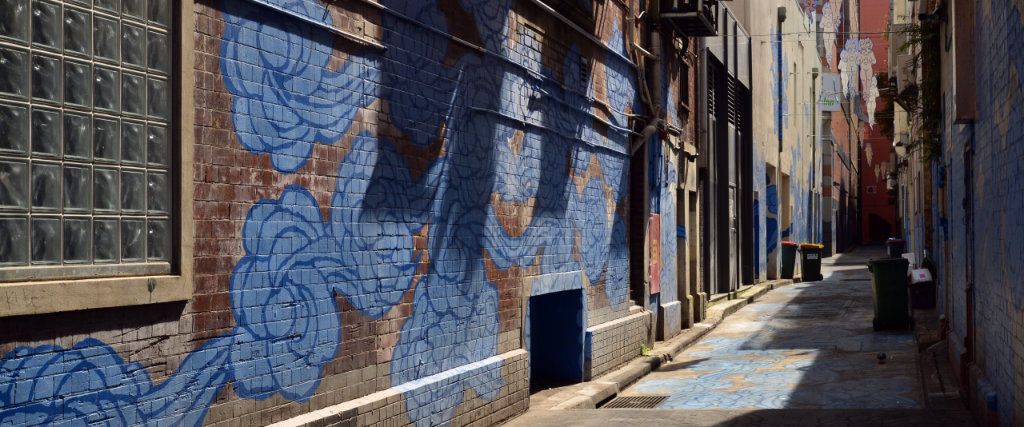

Sydney's Chinatown originated in the 1860s and was first situated near
Surry Hills on Wentworth Avenue and Wexford Street just outside the city.
In the late 19th century Chinatown moved to the Rocks area and later
moved to an area near Market Street.
By the 1920s, it migrated over to Campbell Street, currently the Capitol
Theatre site.When the wholesale markets such as Paddy's Market moved
to their current site in the 1930's Chinatown migrated along to Dixon and
Hay Street Sydney's Haymarket area is now home to Chinatown, the city's
Chinese community having settled around the area in large numbers in the
second half of the 19th Century.
Chinatown is centred around Dixon Street with a pedestrian street mall
with many Chinese restaurants and a 'Paifang' (traditional Chinese gate)
at each end. In 1966 the White Australia Policy was abolished and large
investors from South East Asia were allowed into Australia.
Investors purchased properties along Dixon Street and in 1980s it became
Sydney's Official Chinatown. The Sydney City Council, Dixon Street
property owners and business owners jointly raised funds to build the
ceremonial archways, lions, pavilions and other features. The suburb's
Chinese character dates back to the 1920s with Sydney's Chinese
population dating back to the 1860s.
According to latest estimates over 16,000 residents (nearly 10% of the
City's population) and over 48,000 workers (approximately 12% of the
City's workers) make up the local area. The Chinatown and CBD South
village covers the area from Bathurst Street in the north to Central railway
station in the south, and from Elizabeth Street in the east to Darling Harbour
in the west.
In Haymarket and Chinatown, apartment blocks sit among a thriving
restaurant scene and a busy shopping district. Fittingly Market City is a
large complex filled with food halls, noodle bars and grocers specialising
in genuine Asian cuisine and retail shops. Surrounding attractions include
Star City Casino, Darling Harbour, the Chinese Garden of Friendship, the
Sydney Entertainment Centre and Capitol Theatre. The area also included
the Monorail which was removed in August 2013.
Darling Harbour was re-opened by Queen Elizabeth II as a tourist quarter
in 1988 after it was transformed from a collection of railway yards and port
facilities to a lively collection of bars and restaurants, as well as conference
facilities and tourist attractions that it is today. The area is now a thriving
tourist Mecca bordering Chinatown.The spirited Spanish Quarter is also
located in Haymarket and is the place to sip Sangria, eat tapas and watch
or participate in traditional Flamenco dancing. Located in a huge warehouse
space Paddy's Market is Sydney's biggest traditional market offering just
about everything a keen bargain hunter could want including clothes,
shoes, souvenirs and fresh produce.
In Chinatown there is a sculpture made from a dead tree trunk; created by
artist Lin Li in 1999 and named 'Golden Water Mouth' it was said by its
instigators to bring good fortune to the Chinese community.
